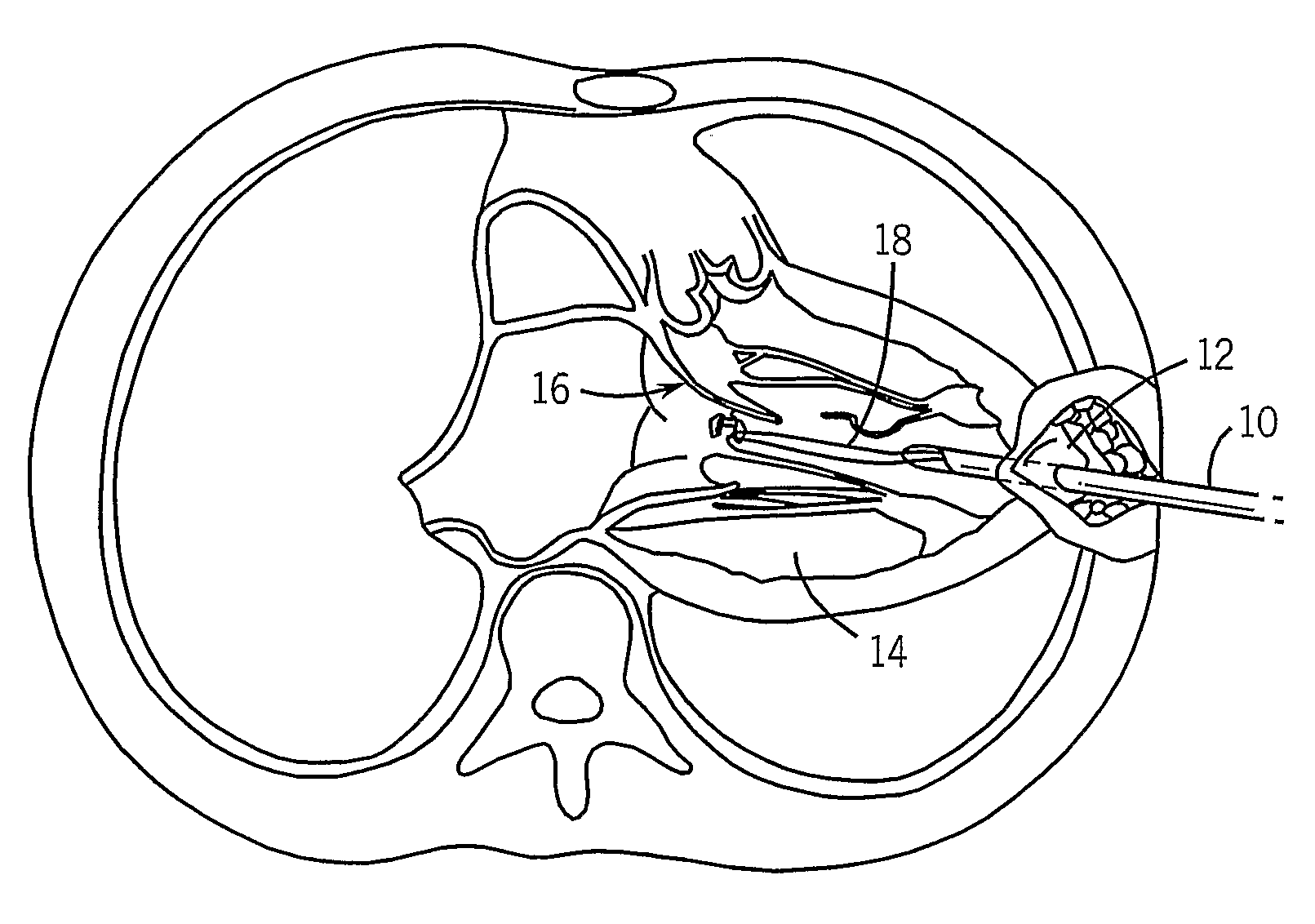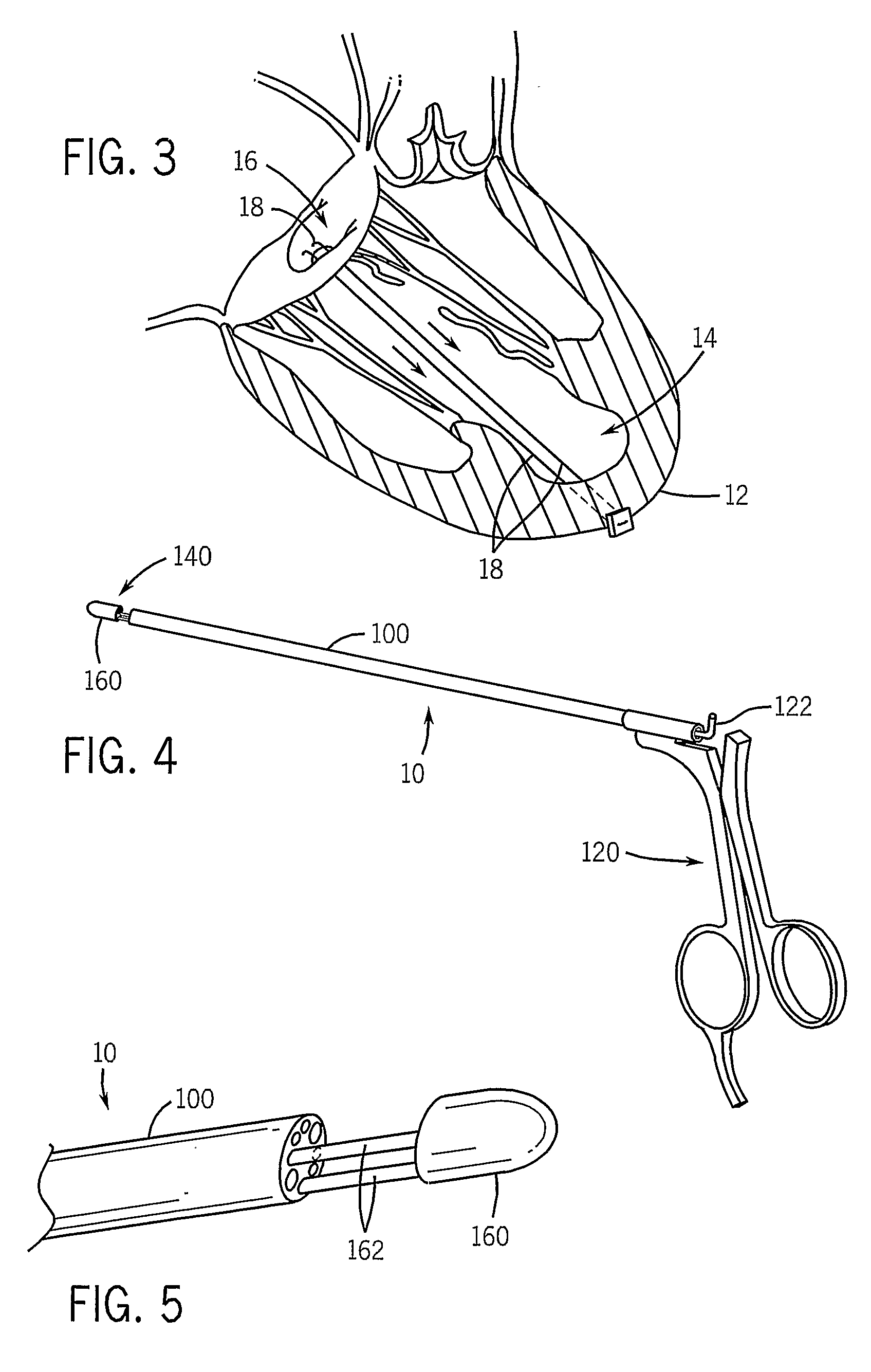Thorascopic Heart Valve Repair Method and Apparatus
a heart valve and thoracic valve technology, applied in the direction of surgical forceps, instruments, catheters, etc., can solve the problems of prolonged hospital stay, high trauma degree, and significant risk of complications
- Summary
- Abstract
- Description
- Claims
- Application Information
AI Technical Summary
Benefits of technology
Problems solved by technology
Method used
Image
Examples
second embodiment
[0024]As shown in FIGS. 9A-9D, the suture deployment system at the distal end of the instrument 10 is positioned around a valve leaflet 16 to be repaired as shown in FIG. 9A. The suture 18 in this embodiment is a closed loop with one end of the loop disposed in the tip 160 and its other end disposed in the lumen 164 and wrapped around the needle 180. The needle 180 is extended through the grasped valve leaflet 16 into the instrument tip 160 where it hooks one end of the looped suture 18 in a notch 166 formed on one side of the needle as shown in FIG. 9B. The needle 180 is then retracted to pull the the looped suture 18 through the puncture opening in the leaflet 16. The leaflet is then released as shown in FIG. 9C by sliding the tip 160 to its open position. The instrument 10 is then withdrawn as shown in FIG. 9D to slide the unhooked end of the looped suture 18 along the length of the needle toward the leaflet 16 where it forms a Larks head around the leaflet edge.
[0025]The instrum...
third embodiment
[0026]As shown in FIGS. 10A-10D, the suture deployment system at the distal end of the instrument 10 is positioned around a valve leaflet 16 to be repaired as shown in FIG. 10A. The midpoint 17 of the suture 18 is looped around the lumen 164 and its two loose ends 20 are coiled up in the tip 160. After the tip 160 is closed to capture the valve leaflet 16, the needle 180 is extended through the grasped valve leaflet 16 into the instrument tip 160. The free ends 20 of the suture 18 are positioned in the tip 160 to form a loop 19 and a notch 166 formed on one side of the needle extends through this loop 19 and “hooks” the free ends of the suture 18 as shown in FIG. 10B. The needle 180 is then retracted back into the lumen 164 to pull the hooked ends of the suture 18 through the puncture opening in the leaflet 16. The leaflet is then released as shown in FIG. 10C by sliding the tip 160 to its open position. The instrument 10 is then withdrawn from the heart as shown in FIG. 10D to pull...
PUM
 Login to View More
Login to View More Abstract
Description
Claims
Application Information
 Login to View More
Login to View More - R&D
- Intellectual Property
- Life Sciences
- Materials
- Tech Scout
- Unparalleled Data Quality
- Higher Quality Content
- 60% Fewer Hallucinations
Browse by: Latest US Patents, China's latest patents, Technical Efficacy Thesaurus, Application Domain, Technology Topic, Popular Technical Reports.
© 2025 PatSnap. All rights reserved.Legal|Privacy policy|Modern Slavery Act Transparency Statement|Sitemap|About US| Contact US: help@patsnap.com



